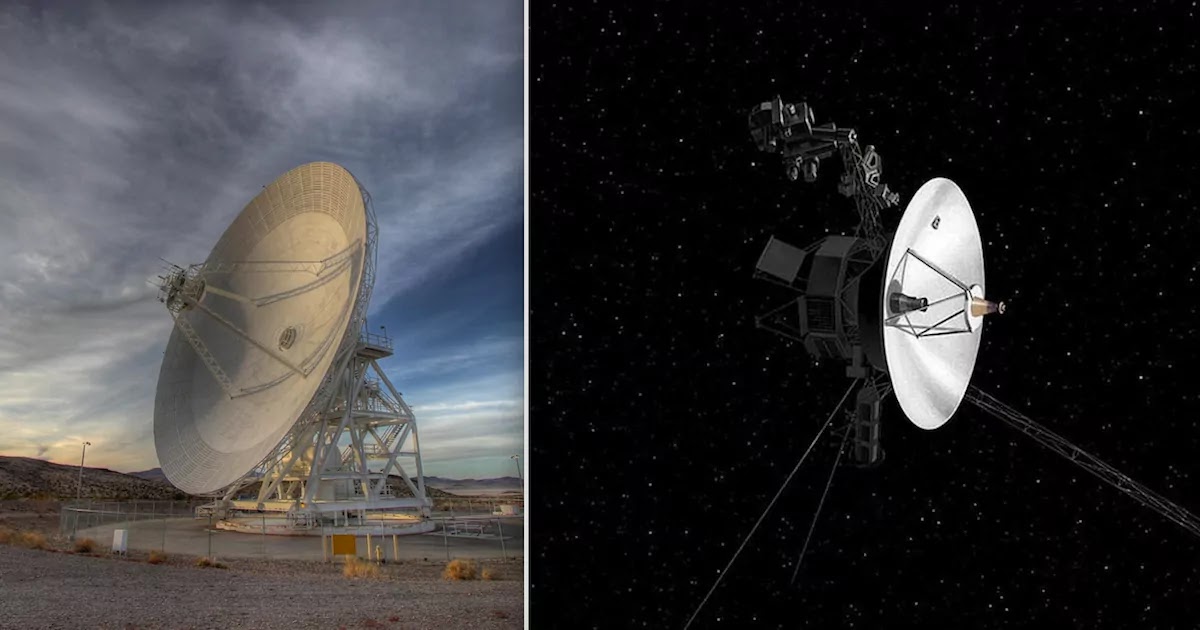
NASA has received a signal from its Voyager 2 probe that it launched way back in August 1977. The probe had been offline since March to allow for repairs to ground receivers, and some had feared that contact with the craft may be lost for good. Those fears were unfounded and, just days ago, NASA received a 'call' from the 42-year-old craft at one of its huge communication antennas.
Voyager 2 is now an unbelievable 18.8 billion kilometres (12 billion miles) from Earth and is still hurtling further and further away through the abyss of space. It is so distant that the message, sent at light speed, takes 35 hours to reach home.
Brad Arnold, the DSN project manager at Nasa's Jet Propulsion Lab, said:
"What makes this task unique is that we're doing work at all levels of the antenna, from the pedestal at ground level all the way up to the feedcones at the center of the dish that extend above the rim. This test communication with Voyager 2 definitely tells us that things are on track with the work we're doing."
The transmitters that send and receive messages to the craft were updated for the first time in 47 years, with other infrastructure also replaced, leading to hopes that Voyager will be able to send back information for years to come.
While it may be remarkable that the craft is operational, it must be remembered that it is not exposed to any friction or debris while moving through the vacuum of space. Therefore, there is no real impediment to the craft sending back information well into the future.
Philip Baldwin, operations manager for Nasa's Space Communications and Navigation (SCaN) Program, added:
"The DSS43 antenna is a highly specialized system; there are only two other similar antennas in the world, so having the antenna down for one year is not an ideal situation for Voyager or for many other NASA missions. The agency made the decision to conduct these upgrades to ensure that the antenna can continue to be used for current and future missions. For an antenna that is almost 50 years old, it's better to be proactive than reactive with critical maintenance."
NASA is currently working on space probes that will explore the Moon for water deposits after traces were found earlier this year. It is also planning a mission to Mars to search for alien fossils.












COMMENTS